The young man appearing on this carte-de-visite could be certain everyone would remember his profession. You might even say he was in tune with the latest trends in advertising and self-promotion. The one thing he neglected to do was write his name on the back, which is a pity.
The CDV was made by James Andrews of Swansea, Wales. According to Victorian Professional Photographers in Wales 1850 -1925, Andrews was at the Wind Street address from 1871 to 1884.

Modern business cards are rather dull by comparison, wouldn’t you agree?


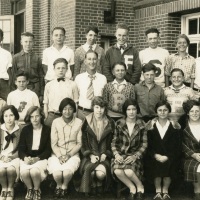



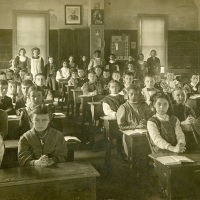

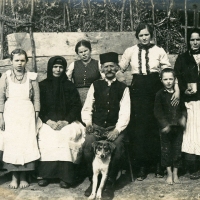
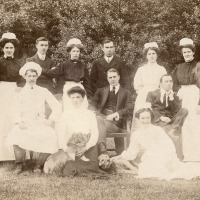
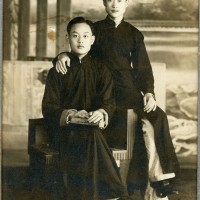
A splendid photo. Many piano tuners were blind but could be trained up to tune instruments by touch and sound. Could that be why his name is not written on the cdv?
LikeLiked by 1 person
Oh, I never thought of that! What an interesting idea. It could simply be that he gave the card to a friend who already knew his name. It makes you wonder, though, especially if the point was to advertise his services.
LikeLike
I love this image. He is so elegantly dressed, with the satin-striped trousers, the longish coat, and that wonderful collar and tie! Surely these are his special clothes for the photograph and not his workaday outfit? It occurred to me, too, qvictoria, that perhaps he was blind–something about the way he is NOT looking at the camera suggested it to me. Of course that’s just speculation on my part. I am wondering, too, just how he is tuning the piano. In the photo it almost looks as if he is turning a tuning peg with his fingers, or is that the end of a small wrench he is delicately holding? Of course, it is quite wonderful that he is using only his ears to tell the pitches. Don’t you think it’s likely that a tuning fork, or a set of them, might have been used as a starting point?
LikeLiked by 1 person
Yes, the trousers are very dashing! I hadn’t paid attention to the tie, but the collar does stand out (literally).
LikeLike
He is very well-dressed for piano tuning. My parents have their piano tuned by a local music teacher (he taught me recorder when I was a kid), but he doesn’t have satin-striped trousers!
I think this guy is not looking at the camera because he is staring into space, listening to the note he is playing.
LikeLiked by 2 people
That’s my interpretation of his pose as well. It would be interesting to know what kind of piano this is. I spent a lot of time looking at 19th c. harps for my post about John Chatterton. Google Ads have been appearing for old harps ever since. It might be nice to see some old pianos for a change, heh heh.
LikeLiked by 3 people
Hi Brad
Some of the comments suggest that unsighted people can’t dress themselves or that the pose suggests he is trying to obscure the “unsightly appearance” of his eyes. How rude! 🙄 😊 Of course blind people can dress themselves! If the appearance of his eyes were of concern to his family and friends, with a view to his acceptance in society, he would’ve worn dark glasses. No, I don’t think he was blind. As you and another commenter say, he was concentrating on the sound, as he would do when actually working.
I would also say that his pose wouldn’t be an indication of how long he had to sit still. By the time CDVs arrived cameras had advanced enough for this not to be as much of an issue as it once had been. I would suggest that generally people had better posture, or that the photographer encouraged the formality of the pose as it would’ve made for a better photo.
I’m also wondering if his clothes were indeed the ones he worked in. The jacket is quite illfitting, not what you’d expect to see in formal wear. It would’ve allowed for plenty of freedom of movement while working. He would also need to wear quite good clothes to go into the various types of houses where pianos were kept. He might have gone from relatively poor homes to middle class or upper class ones in any given day.
It is certainly a shame that his name or address isn’t on the photo. I’ve often wondered why the option to stamp those details don’t appear on more CDVs.
I hope you can find out what type of piano he is working on. You need some variety in your online advertising from now on. 😃 Kate.
LikeLiked by 1 person
Excellent observations, Kate! I agree that posture was considered very important in those days, especially in photographs. What you said about his clothing was something I hadn’t considered at all. Like posture, clothing sent a message about a person’s professionalism and sophistication. Piano tuners today might not think much about their “uniform,” but they certainly would have in 1875.
Yes, I should research the piano. All I see now is harps! 😀
LikeLiked by 1 person
Probably he hand-wrote his name on the photo for prospective clients, it would have made it more personal.
I’m not convinced that’s a real piano, or maybe just not a piano. My parents had a piano that had (sadly for its sound as it did terrible things to the acoustics) a glass front and it didn’t look like this… this is more complex. The pegs beyond his hand look like they’ve been painted or printed on, but that might just be the fading of the photo.
LikeLiked by 1 person
Oh right, here you go. It has the hexagonal legs: http://www.pianohistory.info/victorian.html
LikeLiked by 1 person
That’s a great link! I’d never heard the term “cottage piano,” but there’s no reason I would have before. Studying my photo, I think it may have octagonal legs, which the author of the website shows a couple of examples of from the 1860s, stating, “I find myself wondering if octagonal legs are a feature of the 1860s.” Thank you, Val!
LikeLiked by 1 person
Yes, I think it has octagonal legs… some sort of geometric rather than rounded, anyway. I’d also not heard of ‘cottage piano’ but it kinda makes sense. 🙂
LikeLiked by 1 person
He looks soooo romantic!
LikeLiked by 1 person
So very debonair! 😄
LikeLike